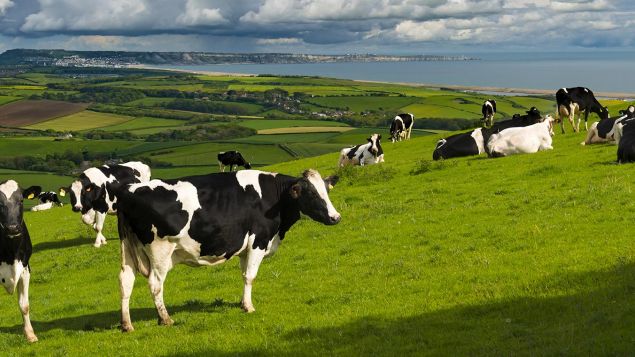

The Preparturient or Transition Period occurs at the end of maternity and beginning of lactation periods. It is practically the period 3 weeks before and 4 weeks after birth. Planning of the period should be made regularly to avoid metabolic and infectious diseases and provide our herd to be efficient and continuous. Success of the transaction period, depends on the precautions taken according to the needs of animals.
Caring and nutrition is currently very important in the transition periods of animals. Our breeders should highly give importance to it in order to avoid problems about milk efficiency. Rapid changes in the physiology and metabolism of animals and adaptation difficulty, are the main reasons for diseases.
Dry material intake may show decreases at the rate of 20- 25 percentage 1 weeks to birth and unfortunately, it doesn’t show increases correspondingly to the increases in milk production. Late in the dry period, rapid growth and colostrum synthesis of fetus, increase the nutrient needs, supress the immune system and increase the risk for infection. Besides, the energy and metabolised protein needs of animals will increase about 25 percentage following their birth.
The mineral losses in colostrum, will stimulate some metabolic diseases because of the sudden and specific nutrient needs of dairy cattle. At this point; caring and feeding management is a very important fact that should avoid serious problems.
How Do These Diseases Affect Milk Efficiency?
The problems in fertility, treatment expenses and milk deficiency may lead to cost increases.
In order to avoid these possible problems, cattle should be transmitted to intramammary rations after the last 3 weeks of their dry periods.
How Should Feeding Management Be In Ration?
The Preparturient Period (The Prenatal Period)
All of these are very important for Rumen adaptation. In the early period, adaptation is all but impossible because of high efficiency and low dry material intake.
The Early Lactation Period
What Are The Factors To Be Considered In Maintanence And Herd Management?
Animals which only have 3 weeks to birth, should be maintained and fed in different stalls. Feeders, waterers and pads should be sufficiently put in an area of 14 m2 them to satisfy their needs and get around freely.
They should be brought into the birth stalls one week to birth, frequently be observed, be away from stress and feel comfortable.
Dry material intake should be controlled daily. Especially in hot weathers, the precautions taken for sufficiency of air conditioning and sun protection are very important. After retention secundarium, animals should be sheltered in their stalls 1- 3 days more and maintained and fed seperately from others for immune suppression and adaptation. The healthy ones can be brought to paddocks which provide sufficient feeder and pad places and have free access to water during the early lactation period. Paddocks shouldn’t be too crowded in order to be able to make observations healthier and avoid competition between animals. At this point; glucose precursors and calcium and antibiotic rich preparates can be the sources to utilise for satisfying needs of animals and avoiding possible problems. Furthermore, the vitamin and mineral needs of them should be supported outwardly to avoid losses during the pregnancy period.
Mesut GÜNER
Technical Field Manager
Veterinarian
Register to our newsletter in order to be aware of our announcements and news.
